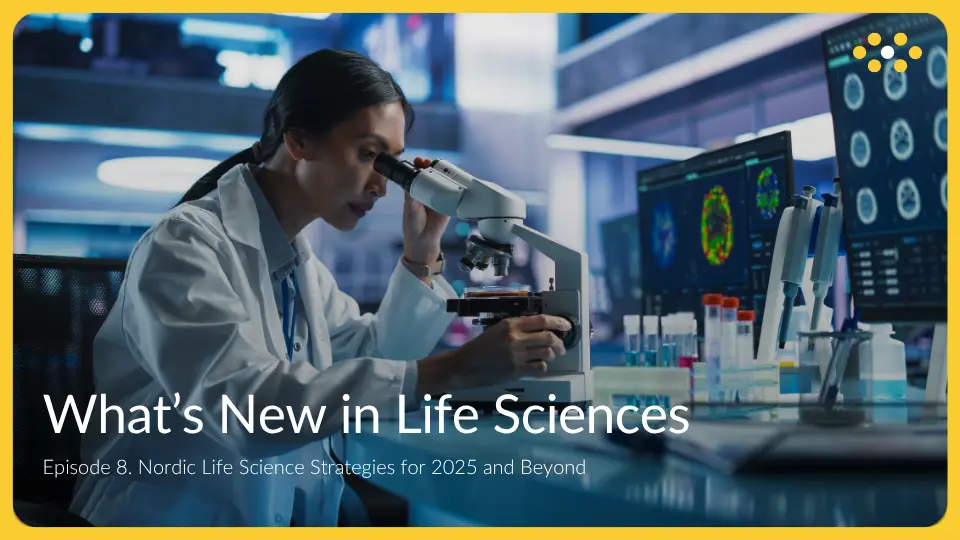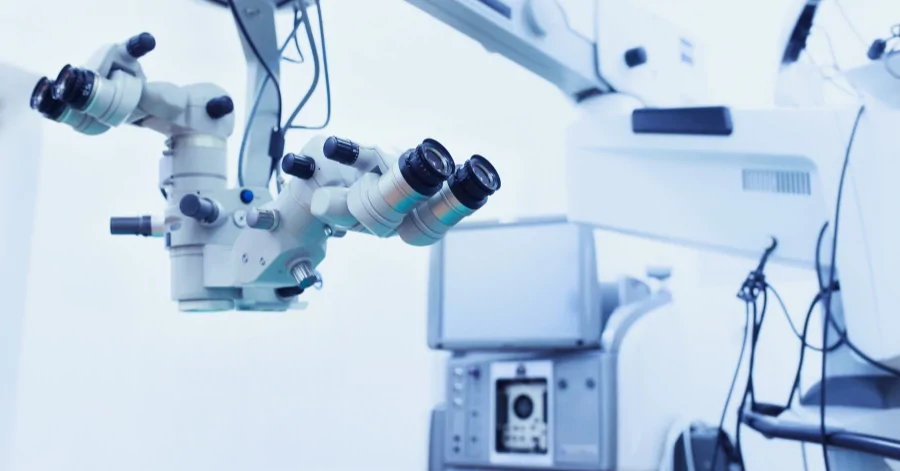Over the last decade, life sciences jobs have transformed. This transformation is fundamentally due to the advances made in several critical areas of the life sciences, which have created what economists call structural job changes, as opposed to the cyclical job changes that accompany wider changes in national economies.
As the nature of technology continues to shift in the life sciences, it’s essential to ask how life sciences jobs are changing in response. By asking this question, we can ensure that job-seekers, recruiters and educators in the life sciences are empowered by focusing on the skills needed to progress lives everywhere.
This article will explore four aspects of how life sciences jobs are changing due to automation and new technologies, the global skills shortage, and a focus on diversity and inclusion in the workplace.
1. Automating life science processes leads to productivity gains
Advances in automation are leading to significant productivity and cost-efficiency gains in the life sciences sector, as well as helping to balance the work-life relationship of life sciences professionals.
Automating life science processes means that manufacturing experts in the pharmaceutical and medical device industries are free to focus on improving manufacturing capacity and efficiency, through which organisations can achieve remarkable savings once a product has passed the research and development phase.
Industrial automation of the life sciences is expected to reach a market value of $4.1 billion by 2027. As the decade progresses, MSAT science, process development, and supply chain professionals will continue to command high salaries in the global life sciences jobs market as a result—with the average process development scientist salary having risen to around $120,000 in the last five years, and MSAT scientist remuneration reaching $100,000 per annum.
Candidates looking to enter the life sciences jobs market or hoping to focus their careers on automating life science processes would set themselves in good stead if they were to take a multi-disciplinary approach to the field. Incorporating a software development or engineering aspect into their professional development, such as industrial engineering or mechanical engineering, will enable them to remain competitive as they look for the life sciences roles of the future.
Suppose a candidate is still studying or planning to complete a postgraduate qualification to specialise in a specific area of life sciences manufacturing. In that case, they could choose a degree course where the educational aspects will prepare them for the transformations underway in the life sciences industry, such as:
- Materials science
- Production engineering
- Chemical engineering
- Electrical engineering
- Computer science
- Robotics
Automation is set to transform the day-to-day responsibilities of manufacturing and R&D professionals in the life sciences by enabling them to focus more closely on quality assurance, research, clinical trials and outreach activities rather than the legwork that traditional manufacturing often requires.
From bioprocess engineering to process development science, automation is being leveraged to transform and refine existing drug and device manufacturing procedures, enabling organisations to scale up their activities and help more patients than ever before.
2. Life sciences skills shortage: how companies retain talent
The life sciences skills required of candidates for opportunities with the most cutting-edge companies across the globe are expanding even as they’re becoming more specialised. As a result, many companies within the sector report that across all organisational levels, from technicians to executives, they’re encountering more skills mismatches during the hiring process and that digital literacy is becoming a growing concern for their ongoing resiliency.
With over 133,000 life sciences jobs needing skilled candidates at a hirable standard by 2030, the skills shortage is beginning to impact even the largest organisations in the sector.
What does this look like regarding the changing landscape of life sciences jobs?
Many companies have begun to focus on keeping up with and outdoing their competitors by offering higher salaries and better benefits for prospective employees, as well as concentrating on hybrid or remote roles for those candidates whose positions allow for it.
Alongside this, organisations in the life sciences industry have also started to focus heavily on their learning culture and professional development opportunities for current staff. According to a Deloitte Insights report, companies that emphasise education and career development retain 30-50% more employees than their competitors that don’t focus on these aspects.
Similarly, educational institutions are preparing candidates to enter a life sciences field revolutionised by the changes we will cover elsewhere in this article. Still, for these skills to remain relevant to the changing character of life sciences jobs over the coming decade, organisations will need to continue to invest in the training of their employees.
For many in the sector, the outlook is bright due to this renewed focus on learning and continuous professional development. Alongside this, competition between medtech and biopharmaceutical firms has led to increased salaries, alongside a commensurate emphasis on organisational values, purposes and goals.
Corporate social responsibility (CSR) initiatives—minimising the environmental or social harms that a company causes—rate highly with consumers and employees alike.
In a report authored by Capital Reserve Strategies, a robust set of corporate social responsibilities and values are the third most significant driver of employee engagement and morale. Socially responsible companies have an easier time connecting with a workforce that shares their values, and organisations have found that a meaningful learning and development strategy and community-driven initiatives have increased employee retention rates by up to 50%.
3. Digital transformation in life sciences sectors
The shift towards an increasingly-digitalised workplace in the life sciences has been encouraged even in staunchly traditional organisations due to the COVID-19 pandemic.
With companies worldwide having been necessitated to utilise tools such as digital asset management (DAM) software, e-conferencing and cloud computing, many business leaders have recognised the continued importance of this change for overall productivity, collaboration and cost-efficiency, even as we move into a post-COVID world.
Correspondingly, telemedicine and e-health platforms have grown, which have not only improved patient access but have led to reduced costs for companies across the life sciences and healthcare professions. Specialised practitioners can see patients worldwide from wherever their offices might be. Roles supporting healthcare practitioners' continued digital provision of services—such as software development, networking and IT support—have also grown significantly.
As for recruitment and onboarding processes, the digital transformation in life sciences has led to benefits for candidates at all levels of seniority. With a focus on virtual interviews and recruitment events, biotech and pharmaceutical professionals now have more access to the organisations with which they’re interviewing. Furthermore, information about organisations is available to research online, and more detail is provided in the interview environment through in-depth slide decks.
Alongside this, candidates interviewing for life sciences jobs are more likely to be able to have question-and-answer sessions with executive members of staff and to be introduced to their prospective team to gauge culture fit alongside their technical skills. In addition, virtual recruitment has meant that the traditional bottlenecks in hiring practices—namely, travel, rescheduling and the geographic limitations on attracting skilled candidates—have now been removed.
From the perspective of those working within the life sciences industry, the leveraging of digital technologies has meant a fast-tracking of research and development processes, as well as an improvement of patient and clinical trial participant outcomes through the wealth of data that can now be gathered and analysed using machine learning algorithms.
As artificial intelligence is increasingly integrated into the workflow of life sciences jobs, cutting-edge clinical trials can automatically match with patients to provide proactive treatment for rare diseases. In addition, the shift toward cloud-based computing has meant that professionals across the clinical research, medtech and healthcare spectrum can share information with each other and ensure that patients move smoothly through their interactions with the life sciences industry.
This impact of digital transformation in life sciences cannot be understated. Across the board, patients receive better care, and employees can work more effectively and collaboratively regardless of location. The knock-on effect is that economies improve as patients and their carers can return to employment, particularly as strides are made to ensure that terminal or degenerative illnesses become manageable.
4. The importance of the focus on diversity in life sciences
“How do you serve the entire population if you don’t represent the entire population?”
— Claire Bonaci, Sr. Director, US Health & Life Sciences at Microsoft
As organisations focus closely on their corporate social responsibilities and the values they stand for in their work, there has been a commensurate focus on driving diversity across the life sciences workforce. As a result, life sciences jobs have become more open towards BAME, female, LGBTQIA+ and working-class candidates and those individuals with disabilities, particularly at the executive level, where the disparities are most glaring.
Research from PricewaterhouseCoopers has shown that when deciding to work for an organisation, 76% of female career starters look at the diversity of the executive suite and senior staff before accepting an offer.
Career progression and inclusive workplace culture are vital to plugging the skills gap within life sciences jobs, particularly as organisations find that they’re more likely to create innovative products and processes when they can draw upon the experiences of a workforce from diverse backgrounds.
By making diversity, equality and inclusion (DE&I) a fundamental organisational value, companies within the sector are better placed to assess what they’ve done each year to improve these factors in their own workplaces—a significant matter, given the statistics on employee motivation and retention we discussed earlier.
These DE&I initiatives are vital in life sciences jobs, where organisations work to get their products to as many people and geographical locations as possible.
If an organisation is made up almost entirely of one kind of employee, they might miss some crucial needs of patients that don’t share their backgrounds. So, for example, a neurotypical individual might miss the needs of a neurodiverse one, and a male from an affluent background is likely not to understand the nuances of increasing access to healthcare for working-class women.
Inclusion and diversity in life sciences jobs lead to better patient outcomes and a greater emphasis on collaboration and teamwork between employees within medtech and biopharmaceutical organisations.
As more millennials and generation Z candidates enter the workforce, this emphasis on DE&I initiatives will become more critical, and fostering an inclusive workplace is a high priority for these professionals.
With the advances in automation and machine learning, life science recruiters are also able to aid in transforming the life sciences jobs market by removing conscious or unconscious bias from their professional practice, ensuring that candidates with disabilities, women or those from BAME backgrounds can be on a level playing field when it comes to the hiring process.
Alongside this, professionals within life science organisations are finding themselves in ambassadorial positions, whether as part of an outreach function or as a facilitator for an internal employee networking group. These groups aim to foster a sense of belonging and safety, highlighting to potential hires—as well as those entering the university environment and planning on a career in the field—that they’re welcome and indeed integral to the continued growth of the life sciences sector.
As a result, candidates from diverse backgrounds will find fewer obstacles to beginning and progressing in their careers.
Discover cutting-edge life sciences jobs
The life sciences recruitment team at Amoria Bond comprises subject matter experts focused on supporting the industry as it progresses lives everywhere. With a global reach and specialist insights into the requirements of leaders in the sector, we can guide and assist candidates in accessing roles with some of the most exciting and innovative organisations worldwide. If you want to learn more, explore our specialisms page or contact us to discuss your requirements.






